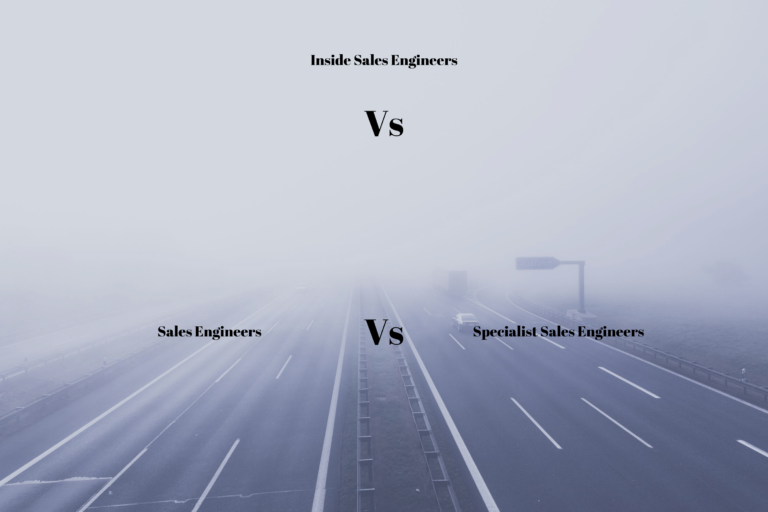First day on the job, I walk into the office an hour before I’m supposed to meet my manager and mentor.Since I’ll be talking about my mentor a bit here, let’s call him Billy. I wanted to get myself situated and meet some folks in the office before my Billy gets there and initiates his brain dump. I was a brand spanking new SE who moved over from a Network Design role at Alcatel-Lucent. All I knew was that my Billy was going to train me. In my mind, training was technology and product based. Here’s how OSPF works, and here’s how you configure it. To my surprise, my SE training had nothing to do with that.
Billy started off by listing all the products that were within my portfolio. As a I’m a generalist SE, I had 8 different product lines that I was trying to understand. He then did some demos on a couple of product lines. Lucky for me, I’ve already worked with one in my previous job, so I was able to retain that. Retained nothing of product number two. Suffice it to say it got overwhelming really quickly, or as my son would say: I pooped in my diaper!
Now, more than four years into the job, I’m thinking how this could have been done better. What are some the information that I need as an SE to do my job most effectively? Here’s what I think the SE should learn about on his or her first week at the job. I’d love to hear your thoughts, so let me know in the comments.
The Account Manager(s)
Some SEs are paired up with one AM for their territory, others have to work with multiple AMs for their different accounts. Whether the SE is an experienced SE starting a new job, or like me, where I still had my new SE smell, the AM is the first person I want to meet. I would like to know how this guy ticks. And like every other encounter with any other human being, as soon as we meet each other, we start judging each other.
Can I work with this guy?
Is he talker, or a listener?
Do I get this sleazy salesman vibe? Or do I feel like I’m having a normal conversation?
Does he know the accounts?
All these thoughts pop into my head when I’m meeting a new AM. They may be wrong, or right. That is why the SE should spend more time with the AM especially if they are paired up. It would be great if you become best buds, but in all likelihood, this will remain a professional relationship. So try to learn how this person works. Figure out how he likes to be talked to, or if you can joke around with him in front of customers.
Some of these things will take time to learn and understand, but you can start figuring it out day one. I like to start from a position of trust. I would hate to be hired only to have a sales guy not trust me to do my job, so having a bit of trust goes a long way. Make sure the lines of communication are open from the get go.
Your Accounts
You will need to know your accounts. Where are they? What product/solution they bought from you? All this info should be with your AM(s). Remember my question above: Do they know their accounts? This is where it comes in handy. You need to know that information so that when you go to meet the customers, you know what to talk about. Keep in mind that you don’t have to talk much in the first few meetings. Everybody understands that if you are new, then you might not know everything. Trying to show that you know everything is not the best way to go.
80/20 Rule for Products
If you are a generalist SE like me, then you will have many products to sell. Luckily, most companies that have many products, also have consultant or overlay SEs. You can rely on them in some of the cases when you are starting. However if you study your market, you can apply the 80/20 rule. If you are not familiar with the 80/20 rule, it is based on Pareto’s law. In short, Pareto is an Italian economist who did a study and realized that 80% of the country’s wealth comes from 20% of the population. Lots of studies has happened since to show, for example in sales, that 20% of your customers generate 80% of the sales. This will apply to the products as well.
Work with your AM to find out which products sold the most. Also which problems these products were sold to solve. If you really want to get granular, you can do the 80/20 analysis of the 80/20 you just did, until you can focus on one single topic. That is what you can start learning. That is your priority. Once you’re done with that, then you can give yourself permission to work on more aspects of your product.
The Problem your Products Solve
You will see that many companies like to call their products “solutions”. That is because it’s easier for a customer to buy a solution to a problem than a product. Even though you went through the 80/20 rule, you still need to be able to hold a conversation with a customer and ask the right question to figure out which product is the right product for them. If that is not part of the 80/20 product that you are working on, get the consultant team involved.
Consultant/Overlay Team
I already mentioned the Consultant SE. The consultant team is the SE and Salesperson if one exists. In some companies, the consultant salesperson is there to help the the generalist salesperson understand the solution that is being sold so that the generalist can explain the proposal to the customer. The generalist salesperson owns the relationship, the consultant is there to help. Some case deviate from that, but I’m not going into that here. Lots of products will have consultant teams, or at least SEs. You will need to know who they are to ask for help when you need to, or get them involved in a meeting.
Product Managers
Product Managers (PM), otherwise known as Product Line Managers (PLM), are an important partner for the sales organization. They can control what features go into what product, which very likely control your livelihood. Also the PMs know what features are already supported, which are on the roadmap and which will never be supported. However each product will have multiple PMs. Let’s take a router for example, you will have a PM for hardware, another for routing technologies, another for GPS timing, etc. It is important to know which PM works on what. That way if you have a question or a need, you know who to communicate to.

Below, I have a document where you can put all that information.
Email Lists
Some companies prefer that you send your questions to mailing lists before emailing the PM directly. That is usually because the PMs are travelling and might not be in a position to answer your questions. Also, more people can provide the answer quickly. There is usually a separate email list for each product. So know your lists, and subscribe to them.


